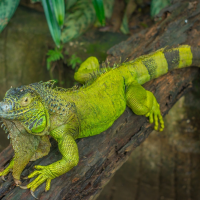
Table of Contents
Quick Facts
| Aspect | Information |
|---|---|
| Origin | South America, particularly found in savannas and dense forests |
| Size | Largest rodent in the world, can weigh up to 100 pounds (45 kg) |
| Lifespan | Approximately 8-12 years in the wild; up to 12-15 years in captivity |
| Coat | Short, rough hair with colors ranging from brown to reddish-brown |
| Temperament | Generally calm and sociable; often enjoy companionship with humans and other animals |
| Exercise Needs | Requires access to water for swimming; enjoys daily walks and grazing |
| Training Difficulty | Moderate; can be trained to some extent but may exhibit strong natural behaviors |
| Health Issues | Susceptible to parasites, particularly ticks; can suffer from heat stroke if not kept cool |
| Grooming Needs | Minimal grooming required; occasional brushing and nail trimming suffice |
| Price | Varied; typically expensive due to limited availability and specialized care |
Introduction: Capybara
Capybaras are the largest rodents on earth, which are relatively non-aggressive and can become unusual pets. Originally from South America, those are semi-aquatic animals closely related to guinea pigs and can become an interesting pet in the right home. But to keep a capybara as a pet, it is highly important to study all the needs and peculiarities of these animals to provide them with all the conditions they need within their home environment.

History and Origin
(Hydrochoerus hydrochaeris) more commonly known as capybaras are some of the wild animals found in the wetlands, rivers and forests of South America mainly Brazil, Venezuela, Colombia and Argentina. The name capybara originates from the Tupi Indian language, where it refers to the mammal as ‘’roda capybara,’’ which translates to ‘’grass eater”. Previously, they have always featured within the local ecosystems as primary prey to jaguars, anacondas, and caimans. They have also been targeted by men for their food and skin. Lately, their passive temperament and friendly interaction with people made them even more desirable for those who like to have exotic pets.
Physical Appearance
Capybaras are unique mostly due to their large size, a stout body similar to a barrel, short head and short reddish-brown to grayish fur. Adults range in weight from 77 to 150 pounds (35 to 70 kilogram in weight and in height are about 20 to 25 (50 to 64 cm at the shoulder. Their second toe on their feet is semi-opposable which makes their feet somewhat webbed to help them swim, while their eyes, ears, and even the nostrils are positioned on the crowns of their heads, this enables them to keep most of their bodies submerged in water, with only their eyes peeking to check for danger.
Temperament and Personality
Due to their friendly characteristics, capybaras are regarded as the ‘puppy’ of rodents. They can easily get bored and become lonely if they are left alone most of the time. They are not very assertive, and depending on the breed can be submissive hence making them suitable for homes with other animals as long as the introductions are done properly. With regards to vocal communication, capybaras purr, whistle, and bark, although the type of vocalization used depends on the need at hand in the animals’ society.

Exercise and Activity Needs
Capybaras are social and energetic animals which have a need for a large territory for movement, search for food, and water. The best environment for a pet capybara should be a well fenced enclosure with a source of water such as a pool or pond to enable them have their baths. They also feed on grasses and water plants so a yard with plant diversity will be ideal. This should entitle them to adequate and proper physical activity, so that they do not suffer from obesity and other related diseases that affect their overall physical and psychological health.
Grooming
In terms of grooming, capybaras are not very demanding at all. Their fur is relatively short, so there is no need to brush them often, but if your pets do not swim often, you should bathe them regularly. Owners also need to monitor their nails and teeth since the teeth of the capybaras continuously grow and must be filed down by gnawing on woods and other similar substances. Dental care includes even giving your pet canine chew toys or logs to chew.
Health and Common Concerns
Capybaras are generally hardy animals, but they can be susceptible to certain health issues. Capybaras are generally hardy animals, but they can be susceptible to certain health issues, including:
- Dental problems: consequently, their teeth are always growing and if they do not wear out properly, dental malocclusions occur.
- Vitamin C deficiency: Similar to guinea pigs, capybaras are also incapable of producing vitamin C in their own body thus, they are prone to scurvy.
- Skin conditions: Mites are other parasites that can cause skin inflammation especially in cases that exist in cooler and humid conditions.
These health problems can be avoided through proper checkups with the veterinarian, appropriate diet including vegetables and high fiber grasses, and a clean surroundings.

Training and Socialization
Capybaras are not easily trained and this takes a lot of time and gentle persistence. While they are not really obedient or easily trainable for commands, they can be and mostly are litter trained. Use of positives only; therefore, giving the child treats and praises are the most appropriate measures to employ. Socialization is just as crucial; capybaras should be taken out in different locations and settings and introduced to familiar and unfamiliar people and other animals or else they become jumpy or potentially malicious. Children who are socialized early and with much stringency are able to fit well into domestic life.
Conclusion
It should however be noted that capybaras can make good exotic pet choices if the proper needs of the animal will be provided. These animals are social, friendly and have many peculiarities that will attract the attention of their owners. But anybody planning to keep capybaras as pets must prepare themselves for the veterinary services, space and time that is involved in keeping these large Semi Aquatic Rodents healthy. It is only through knowledge of their historical past and physical requirements, would it be possible to offer the best environmental conditions for the satisfactory and fulfilling lives of such splendid animals.
Image Source: Getty Images
People also read about: Mini Bernedoodles
















